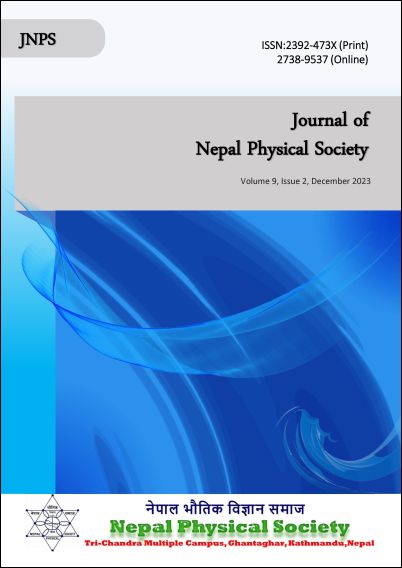Effect of Hubbard Potential (U) on Mn Doped BiTeI
DOI:
https://doi.org/10.3126/jnphyssoc.v9i2.62288Keywords:
Density functional theory, Density of states, Hubbard potential, Magnetic moment, Band gapAbstract
In recent years, Bismuth tellurohalide has gained significant attention as a possible candidate for spintronics applications. Among them, BiTeI is one such layered material that shows Rashba spin splitting responsible for transport phenomenon. On the basis of density functional theory calculations using full-potential local-orbital code, we studied the electronic and magnetic properties of Bi2TeMnI2 compound. Our study shows an energy band gap of 1.18 eV for the parent material BiTeI. The main contribution around the Fermi level are from the Bi-6p, I-5p and Te-5p states. Upon doping Mn atom independently to Bi, Te and I site, we found that Te site is energetically most favorable. With Mn doped to Te site, the material is found to transform to ferromagnetic semiconducting state with magnetic easy-axis along [001] with magnetic moment of 3 μB per unit cell. The magnetic moment is found to alter interestingly with the implementation of Hubbard-potential (U). The value first reduces to 1 μB for U = 3 eV and starts changing with increasing value of U. Due to internal ferromagnetic ordering and strong correlation effect, this compound seems to be a promising candidate for spintronics and quantum computing.
Downloads
Downloads
Published
How to Cite
Issue
Section
License
All right reserved. No part of this Journal may be reproduced in any form or by any electronic or mechanical means, including information storage and retrieval system, without permission in writing from the publisher, except by a reviewer who may quote brief passage in a review. The views and interpretation in this journal are those of author(s) and they are not attributable to the NPS.




